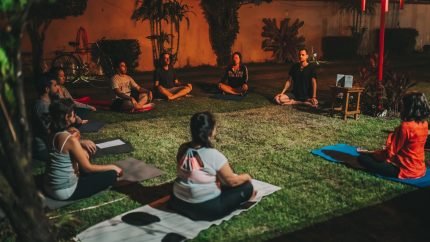Mantra meditation is an ancient practice that has been used for thousands of years to promote inner peace and spiritual growth. It involves the repetition of a specific word or phrase, known as a mantra, as a way to focus the mind and still the thoughts. In this essay, we will explore the history of mantra meditation, its benefits, and how to get started with a mantra meditation practice.
The origins of mantra meditation can be traced back to ancient India and the practices of Hinduism and Buddhism. Mantras have been used for centuries as a way to connect with the divine and unlock spiritual potential. They are believed to have the power to transform the mind and bring about a state of inner peace and well-being. The repetition of a mantra can be used as a form of meditation, helping to focus the mind and still the thoughts.
The benefits of mantra meditation are well-documented. Scientific research has shown that regular practice of mantra meditation can reduce stress and anxiety, improve focus and concentration, and promote feelings of inner peace and well-being. Mantra meditation has been shown to affect the brain in positive ways, increasing the activity in the prefrontal cortex, which is responsible for attention and focus. Additionally, it has been found that mantra meditation can also affect the body in positive ways, reducing inflammation and promoting feelings of relaxation.
Getting started with a mantra meditation practice is easy. The first step is to choose a mantra that resonates with you. This can be a word or phrase in any language, but mantras in ancient languages such as Sanskrit or Pali are often used. It’s also important to find a mantra that has a meaning that resonates with you. Once you have chosen a mantra, it can be repeated out loud or silently, and can be used in conjunction with other meditation techniques, such as deep breathing or visualization.
Mantras can be in any language, but are often in ancient languages such as Sanskrit or Pali. Popular mantras include “Om” and “Om Mani Padme Hum.” Mantras can be repeated out loud or silently, and can be used in conjunction with other meditation techniques. Some people may choose to use a specific mantra for a certain period of time, while others may use different mantras depending on their needs or goals. It’s also said that the repetition of a mantra can help to focus the mind, and keep distractions at bay, allowing for a deeper meditative state.
One way to start with mantra meditation is to set aside a specific time each day for your practice. It can be helpful to establish a routine, such as meditating for a certain amount of time each day, or at the same time each day. It is also important to find a quiet and comfortable place where you can sit or lie down undisturbed.
Incorporating deep breathing and visualization can help to enhance the benefits of mantra meditation. Take a deep breath in and repeat your mantra as you exhale. Visualize the meaning of the mantra as you repeat it. This can help to deepen your focus and bring about a greater sense of inner peace.
It’s also important to keep in mind that your meditation practice should be adapted to your individual needs and goals. You may find that you prefer to use different mantras at different times, or that you need to take a break from your practice from time to time. Remember to be patient with yourself, take time to find the mantra and the practice that resonates with you.
Offers presented by Joe Jepsen:
The Ultimate Wellness Pack
Get Healthy and Save Money!






